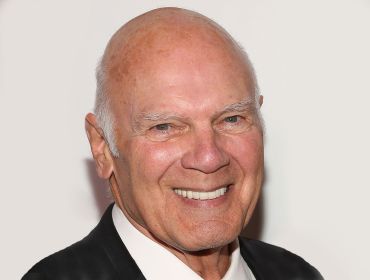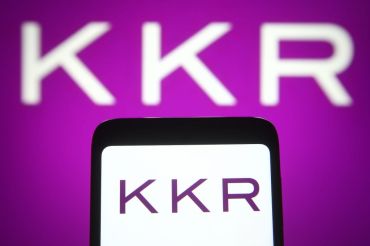Room for Improvement: The Value-Add Hotel Lending Space Is Heating Up
By Cathy Cunningham February 7, 2018 9:30 am
reprints
Hotels, like people, are sometimes in need of a little makeover.
Even more so in fact, given that an average hotel room has a shelf life of only seven or eight years before the cracks begin to show (quite literally) and its potential customers start eyeing its younger, shinier competitors down the street.
But, owners looking to give their property a facelift to boost occupancy and revenue per available room—whether through a renovation, a rebranding or a full repositioning—are in luck: The value-add hotel lending space has become increasingly competitive, which means lower costs of capital for borrowers and a myriad of capital sources eager to lend.
“It’s incredibly competitive out there, and it’s becoming more competitive,” said Matt Nowaczyk, a senior vice president in JLL’s hotels and hospitality group. “There was a tremendous amount of equity in the real estate space, and about 24 months ago those groups started putting their energies into mezzanine, preferred equity and senior lending instead.”
The wide bid-ask spread is part of the switch to the debt side. Sellers’ anticipation of higher purchase prices than the equity community is willing to invest has led to a slowdown in acquisitions and an increase in refinances.
“We’re not seeing a lot of trades in the market from an equity perspective. We’re finding better opportunities on the lending side because people are recapping existing deals,” said Greg Friedman, the CEO of Atlanta-based Peachtree Hotel Group, whose investment vehicles and funds are focused on investing in equity and debt positions on value-add hotels.
“There are a lot of new lenders in the space providing financing for transitional hotel assets,” Friedman continued. “You’re also seeing more collateralized loan obligations being formed that are financing these assets, in addition to private equity funds setting up a debt strategy.”
Debt fund capital is—by nature—value-add, and a lot of that capital is being raised by fund sponsors who have a knowledge of the hotel sector—providing the new competition with especially sharp teeth.
“Many [debt platforms] are sponsored by private equity firms who understand the product. I think it allows them to more competitively underwrite value-add executions,” said Daniel Peek, a senior managing director in HFF’s hospitality practice group. “The loans are a little higher leverage and a little higher cost, although the competition is actually keeping a lid on cost. It’s a very good market for value-add borrowers today.”
Also in the mix is the commercial mortgage-backed securities (CMBS) market. “The single-asset, single-borrower market has been strong for hotels for some time. Hotels are easy to underwrite as a single asset and easy to securitize,” Nowaczyk said. “CMBS has always been a very competitive product to the alternative lenders although CMBS lenders only play when the senior piece is in excess of $150 million—so whale hunting, really.”
Whale hunting indeed, but a CMBS execution creates additional competition for other lenders thanks to CMBS’ significant pricing power in providing higher leverage value-add loans.
A slowdown in demand and increase in supply, coupled with how late in the real estate cycle we are, meant that lenders and equity investors still proceeded with some caution last year.
Warren de Haan, the head of originations and a founding partner of ACORE Capital, said, “The investment sales market is a leading indicator of where people think the market is, and that dropped off significantly in 2017. But here’s the interesting point: The hotel market has done better than any of us thought and continues to do well—which is crazy, because we’re deep into the cycle and hotels are usually the most volatile asset class as their leases are up every night.”
But, lenders should be mindful of opportunities flowing from the slowdown in investment sales, de Haan said: “Just say you want $100 million [to sell] your hotel but you’re only getting bids at $85 million. Because the debt markets are so robust right now borrowers are saying, ‘Well let’s go to the refinancing market instead of the sale market.’ Borrowers will come to us for a 75 percent loan-to-value loan, but that loan is really an 85 percent loan to where someone would actually buy the property in today’s market. We [as a lender] have to be cautious when we get a loan inquiry, and ask, ‘Did it go through a sales process,’ and ‘Where were the bids?’ We have to make sure that the value is lining up with where the market clearing price for a sale would be so that we’re not overleveraging ourselves.”
So, why is the value-add hotel space so attractive right now? “A return premium at the internal rate of return level and a premium at the debt level,” Peek explained. “Generally, it’s a good market, and there’s an attractive yield out there.”
And, just as a stable asset appeals to certain investors and lenders, the ability to create value and reposition an asset is equally attractive to several capital sources today.
“We see an improvement in the stabilized loan-to-value in all of our assets as a result of new capital going in and rebranding,” de Haan said. “In a stabilized lending environment where the assets are stable, you don’t have that uptick because there’s no value-add story. But we love the value-add stories.”
Square Mile Capital Management has made 18 value-add hotel loans over the past three years. It defines “value-add” as assets that have some in-place cash flow but where cash flow is expected to increase over a period of time. The value-add component typically comes through making physical improvements to the property, through a property improvement plan (PIP), a renovation or a repositioning of the asset maybe through a rebranding or changing the franchise, or improving the management or operations of the property.
“Assets typically have an in-place debt yield of 7 or 8 percent but also have a business plan in place to get them to a double-digit debt yield over a 24- to 36-month period,” said Nolan Hecht, a managing director at Square Mile.
Square Mile’s loans typically have a five-year term with a 3-1-1 structure—a three-year base term for the sponsor to execute its value-add business plan with two one-year extensions.
When it comes to identifying an attractive value-add opportunity, Square Mile first looks to the quality of the sponsorship, Hecht said: “What’s their track record, have they done similar renovations or repositionings? Then we look at the feasibility of the business plan—what they’re proposing, does it make sense. Then we look at the asset quality and the local market dynamics.”
If those three considerations are strong, then Square Mile will lend 70 to 75 percent loan-to-cost on a hotel asset.
ACORE favors the whole loan approach in value-add lending, doing both the senior and the mezzanine part of the capital stack with an average loan-to-value of 65 to 70 percent.
“A typical inquiry would be a borrower asking for 65 to 75 percent of the cost of the purchase price plus 60 to 75 percent of capital that they need to invest in the hotel in order to reposition it,” de Haan said. “Once it’s repositioned and stabilized they typically go and sell the asset.”
A value-add hotel lending opportunity recently caught ACORE’s eye in Houston—a market hit hard by Hurricane Harvey as well as the lagging energy sector. “Have the full effects of Houston be felt? Probably not, but you have a Class-A hotel in a great location where the net operating income has been hammered, the asset needs money and the seller is selling it a fraction of replacement costs,” de Haan said.
Bolstering the asset’s story (ACORE is currently considering the deal, so de Haan couldn’t name the property) is its lack of direct competitive supply. “It will be very difficult to replicate and the cost would be way higher—$500,000 a key versus our borrower’s basis at $200,000 a key,” de Haan explained. “So that’s an interesting, risk-adjusted story. The cash flows could suffer for the next two years but fundamentally the value of the asset, coupled with a strong sponsor putting in new capital and upgrading the asset, will come back. And at our dollar basis it feels impossible to get hurt.”
While hotels comprised 25 percent of ACORE’s lending volume four years ago, that amount dipped to 15 percent in 2017, indicative of the caution around new supply outstripping demand.
An asset’s potential to compete with other properties in the area is key, de Haan said.
“We can look at a competitive set of assets and see that our hotel’s average daily rate and occupancy is at the bottom of these four hotels,” De Haan said. “Let’s say the other hotels have nicer features in their rooms than we do, nicer restaurants, but our location is very good—that’s a story I look for. Because if we replace the furniture, fixtures and equipment (FFE) in the room, if the borrower puts in a new restaurant concept and if demand exists in that market it’s not a stretch to think its rate and occupancy should be equal to—or better than—the comparable hotels. We don’t have to believe in the market, but if it improves, we exceed our underwriting significantly. But, we don’t bet on that—that’s a bet that the equity is making, not us.”
Speaking of equity, there’s a debate underway around whether having an equity side to your business is a positive or negative calling card in the value-add hotel lending space.
Square Mile has separate debt and equity platforms but—like others—has seen more action on the debt side recently. “We’re out hunting on both sides,” said Hecht, who believes that having both platforms is beneficial because Square Mile has an understanding of which value-add business plans make sense and which markets are attractive.
“If you have a deeper understanding of the minutiae, location, brand, manager, positioning, I think you can more effectively underwrite value-add financing,” Peek agreed.
Peachtree’s lending platform, Stonehill, is five years old, but Peachtree has been an equity inverstor in the value-add hotel space for 10 years. Friedman sees this as an advantage: “We can understand the credit and what’s happening; it allows us to do deals that are a little more difficult for other lenders because they may not have that knowledge.”
ACORE, on the other hand, doesn’t have an equity platform. De Haan sees ACORE’s position as a pure-play transitional lending shop as an advantage because the firm is not viewed as a threat.
“We’ve concluded that about 10 percent of the $5 billion in business we won last year was because we’re not viewed as competitors on the equity side,” de Haan said. “Those borrowers made the decision that they don’t want to share confidential information on their business plans with their biggest competitors.”
Some wary borrowers will strike a lender with an equity platform from the list of potential capital sources right away, Nowaczyk said. “That said, the capacity of some of those firms is significant, and it’s clear their business plan is making money off debt, not out of trapping guys and taking their assets,” he said.
Boston-based UC Funds provides both equity and debt. It recently made a $75 million direct equity investment in two adjacent hotels on Stamford, Conn.’s restaurant row; an existing Courtyard Marriott; and a half-complete Residence Inn. UC Funds picked up the two assets at a discount and intends to add value by managing both properties under one management company.
“This is a value-add situation where you can buy something unfinished and combine it with an operating hotel with shared resources and amenities,” Daniel Palmier, the president and CEO of UC Funds, explained. “The Courtyard Marriott has a great valet service and pool. We took the opportunity when we bought the Residence Inn to expand the gym from 900 square feet to 1,400 square feet and we don’t need a pool because there’s already one at the Courtyard. So we’re adding value by operating these two hotels symbiotically.”
UC Funds began a PIP on the Courtyard Marriott six months ago, updating the FFE and lobby from its 2004 decor. The Residence Inn is now around 75 percent complete with hip furniture, a baby grand piano in the lobby, a modern bar and outdoor space on a mezzanine level in its future. “It’s going to be a really sexy hotel product,” Palmier added.
As a result of the renovation, “We’re going to cut cost on a room-by-room basis of around 30 percent,” Palmier said. “We now have one general manager for both properties, and we have one valet instead of adding another, so there are efficiencies across the board.”
There’s no doubt that a big-brand hotel name is preferred by some lenders.
“We love lending in the branded space, be it Hilton, Marriott or Hyatt. That will always be a high proportion of our lending business,” Hecht said. “But where it makes sense, we’ve also been lenders on strong lifestyle hotels in the right market. In general, it’s just easier for branded hotels to attract debt capital.”
Square Mile has made 10 loans on Embassy Suites hotels.
“These are 1980s or 1990s assets, and when they haven’t been renovated, they get tired and their market penetration drops down to 100 percent,” Hecht said. “So we’ve been doing loans for the renovations, for the PIPs and then once these assets are renovated the Embassy Suites typically spring back to 110 or 115 percent penetration. They are assets that are doing well—they just need a renovation to bounce back.”
For now, one capital source not competing quite so fiercely with those in the value-add space is the banks.
“An average bank is not going to do more than 50 percent [leverage] on a hotel,” Palmier said. “We go up as high as we feel comfortable. We’re not regulated, we’re a private capital provider, and because we understand the space and the intrinsic value, we can go up to 80 to 90 percent sometimes.”
But that’s not to say there isn’t room at the table for everyone, Friedman said: “I think this is a space where banks are becoming comfortable with allowing alternative lenders like us to fill the void. In some cases we’re partnering with regional banks and community banks who want us in as a participant with them, and we’re taking on that higher risk position in the loan.”


